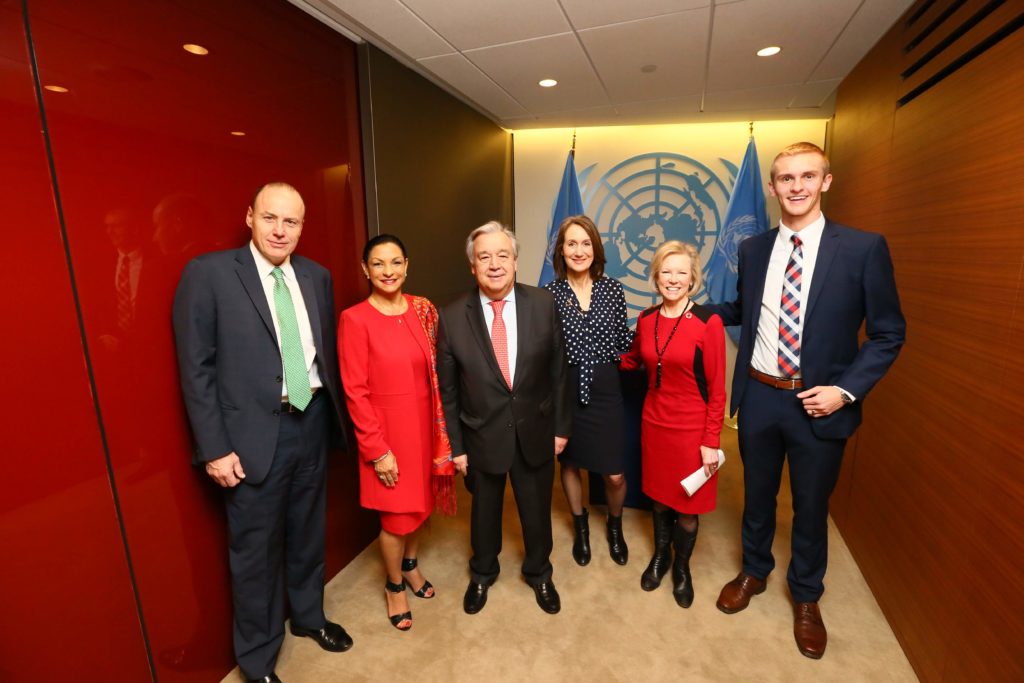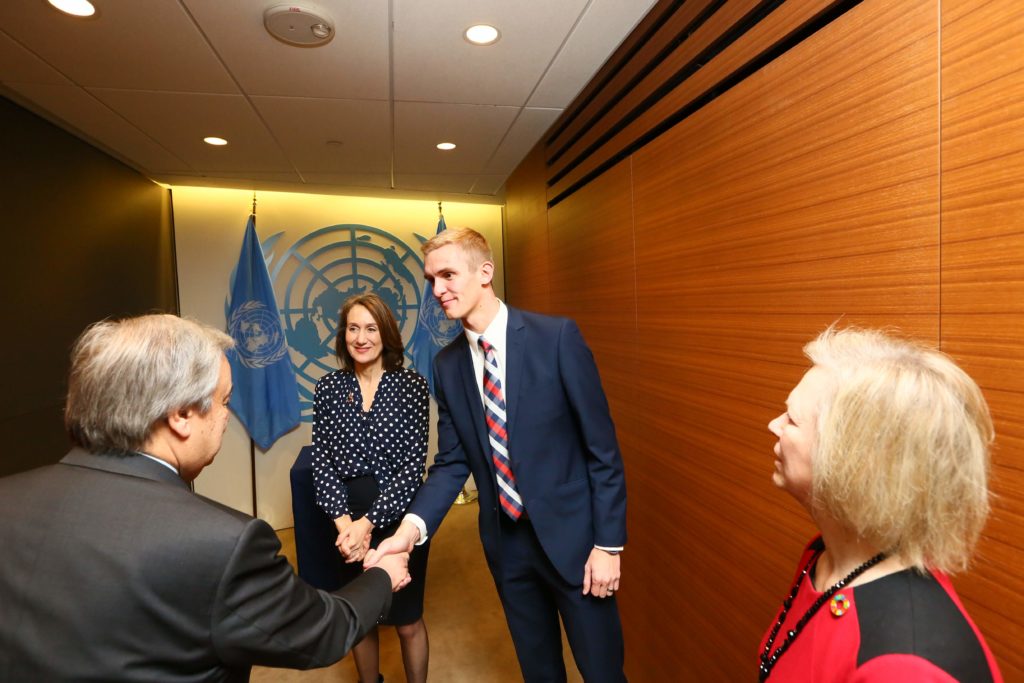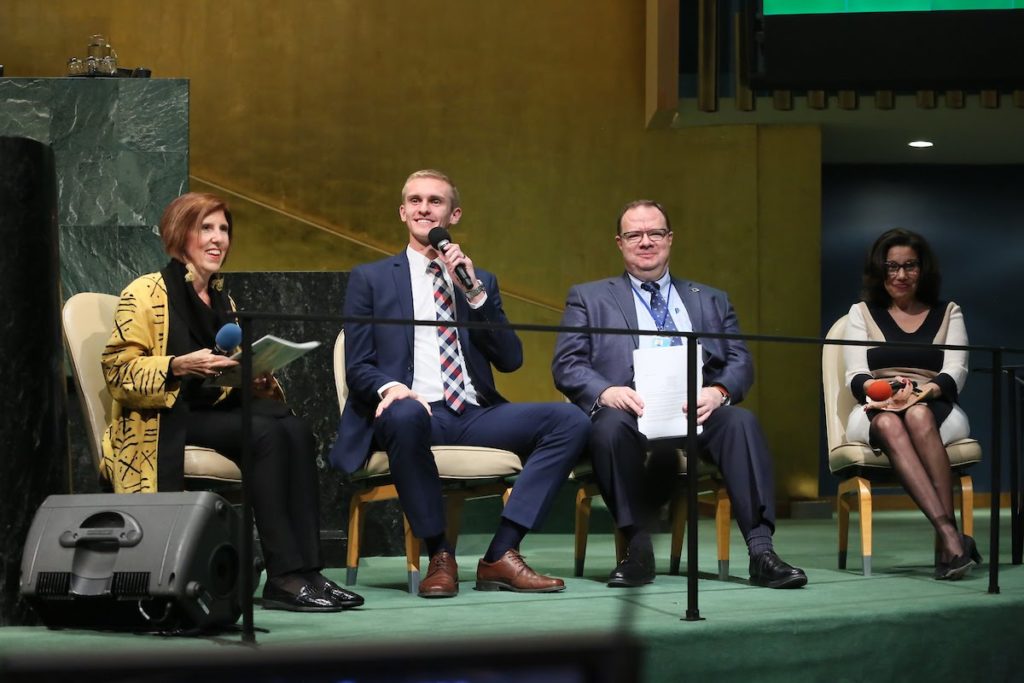Tackling the Hunger Crisis at the Global Engagement Summit

On February 22, 2019, I was pleased to stand as one of 1,500 Americans gathered at UN Headquarters in New York City for the United Nations Association-USA’s Global Engagement Summit. The Global Engagement Summit united world leaders with our nation’s top, grassroots change-makers to participate in a day of dynamic and informative discussions on the most pressing issues facing the United Nations.
The summit began with the exciting opportunity to meet His Excellency Mr. Antonio Guterres. In this behind-the-scenes encounter just outside the General Assembly Hall, the Secretary General had a beat in his step as he entered the room to greet us. This is a moment I have dreamed of since assuming the role of U.S. Youth Observer, and I was amazed by Mr. Guterres’ compassion and enthusiasm. As soon as we had shaken hands and exchanged remarks, he was eager to enter the General Assembly and meet all the attendees. He greeted the group (about half the room comprised of young people) greet the group with a smile and open arms, and even posed for some selfies. The crowd went wild as Mr. Guterres went up and down the isles, taking the time to shake hands with and welcome many of the attendees. Few times have I seen a more captive audience. Mr. Guterres kicked off the Global Engagement Summit by sharing the importance of youth engagement on global issues. From my perspective, his message was one of hope and possibility.

During lunch, I had the special opportunity to meet with university students and UNA-USA corporate partners to discuss “The Future of Work.” The program included keynote remarks from UN Foundation Deputy CEO Elizabeth Cousens, Essity, and the International Labour Organization. Over lunch, I enjoyed the Q&A between students and the corporate partners. Students asked partners which values they seek when hiring, and the partners returned with questions regarding what young people desire when searching for a company. The exchange led to intimate group discussions on issues such as youth unemployment, career readiness, and the dignity of work. To read more about the lunch discussion, click here.
After lunch, we moved onto the Achieving Zero Hunger panel in the General Assembly, which was moderated by Donna Rosa with panelists Steve Taravella (World Food Programme), Joan McGlockton (Sodexo Foundation), and myself. Our goal was to answer the question, “What is the new reality around hunger?” The new reality is that we are going in the wrong direction. For the past three years, global hunger has actually increased. These three years have actually undone the progress we have made from the past decade. It’s rooted in poverty and intersects with many issues including food production, population growth, food waste, malnutrition, health, climate change, global conflict, and migration.

One of the underlying themes of the session was hidden hunger. This can be described as a person who receives enough calories each day while lacking the nutrients to live a healthy life. This is malnutrition, and it is not just a developing world problem. As we discussed on the panel, hidden hunger is prevalent in food deserts and other areas that lack access to adequate food. Even university students are at risk. On our college campuses, we can embrace programs like The Campus Kitchens Project or attend conferences like the Universities Fighting World Hunger Summit to learn how to create a food pantry or organize a food recovery network to ensure that food is better distributed to our peers. At the beginning of my term, I wrote more about reducing food insecurity on college campuses.
Here are a few more ideas for how you can get involved in achieving zero hunger:
- Don’t waste food. Freeze fresh produce and leftovers if you don’t have the chance to eat them before they go bad.
- Buy local and in-season food. Try to grow some of your own food.
- Consume less meat. The meat production industry has a huge impact on the environment.
- Buy Funny Fruit—many fruits and vegetables are thrown out because their size, shape, or color are not “right”. Buying these perfectly good funny fruit, utilizes food that might otherwise go to waste.
- If you are interested in watching the full recording, check out the Achieving Zero Hunger Panel.
One of my biggest takeaways from the Global Engagement Summit is the importance of partnerships. As we seek to find decent work, eliminate hunger from our campus, or contribute to social good, let us engage together in supporting the United Nations.




